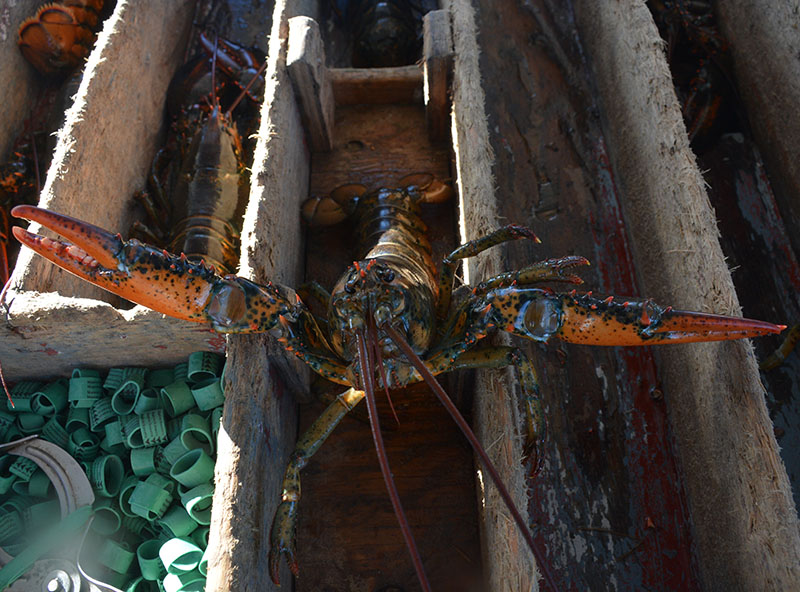Entering a new chapter in Sweden’s ongoing quest to ban the import of live American lobster (Homarus americanus), Scandinavian biologists say American and European lobsters (Homarus gammarus) are crossbreeding and could cause problems in European waters.
It’s too early to tell if the hybrid species can reproduce or if they will fare well in the northeast Atlantic, according to researchers. But if they can survive and reproduce, the hybrid lobsters could have negative effects on the native species.
The hybrids have the potential for above-average strength compared to the native population, which could enable them to push European lobster populations in Scandinavia into further decline as they win the competition for food, shelter and mates. Hybrid weakness is just as damning, as crossbreeding could dilute the genetic strength of European populations and leave them susceptible to disease, specifically shell disease, which is not found in European lobsters.
“American scientists said your lobsters couldn’t survive in European waters, but we have proof they are not only surviving, but competing with the European lobster,” said Susanne Eriksson of the University of Gothenberg in Sweden during the International Conference and Workshop on Lobster Biology & Management in Portland, Maine. “They are crossbreeding, the hybrid eggs are hatching, and the larvae are surviving in our tanks, and in our oceans. We don’t know if they can reproduce yet, that’s a year or two away, but we know the males can produce sperm.”
Ericsson said there is evidence that hybrid larvae and juveniles suffer from genetic deformities, with a quarter of the larvae having twisted abdomens that make it harder for them to swim. Ann-Lisbeth Agnalt of the Institute of Marine Research in Norway uncovered the same findings in her lab, although it didn’t appear to prevent them from molting or competing for food.
Over the past decade, about 100 American lobsters have been captured in northern Europe — 34 in Sweden, 33 in Norway, 18 in the United Kingdom and four in Ireland. Of those, six female American lobsters have been found carrying hybrid eggs — four in Swedish waters and two in Norwegian waters.
“We are not talking about a lot of lobsters, so you might ask a question: What in heck are you making such a fuss about?” Agnalt said, according to the Portland Press Herald. “But be aware of one important thing. We the scientists are not looking for them. We do not have the same monitoring program in Norway and Sweden like you do here. We depend on the local fishermen, who say something funny is happening here. We think what we are seeing is just the top of the iceberg.”
University of Maine marine sciences professor Rick Wahle, the conference co-chairman, said real evidence of the potential threat will come when there are sightings of ovarian formation and viable eggs in female hybrids.
“There are clearly American lobsters out there, and I agree that the 100 or so they’ve already seen are the tip of the iceberg, but it’s got to be a pretty big iceberg to have an impact on the population,” Wahle said. “There’s no evidence of American lobsters taking off in those waters, like the green crab or Asian shore crab did here. That’s what makes this story stand apart from all the invasive species stories we’ve heard before.”
Swedish officials have been pushing to ban live imports of American lobster since March 2016, but efforts have failed so far.







